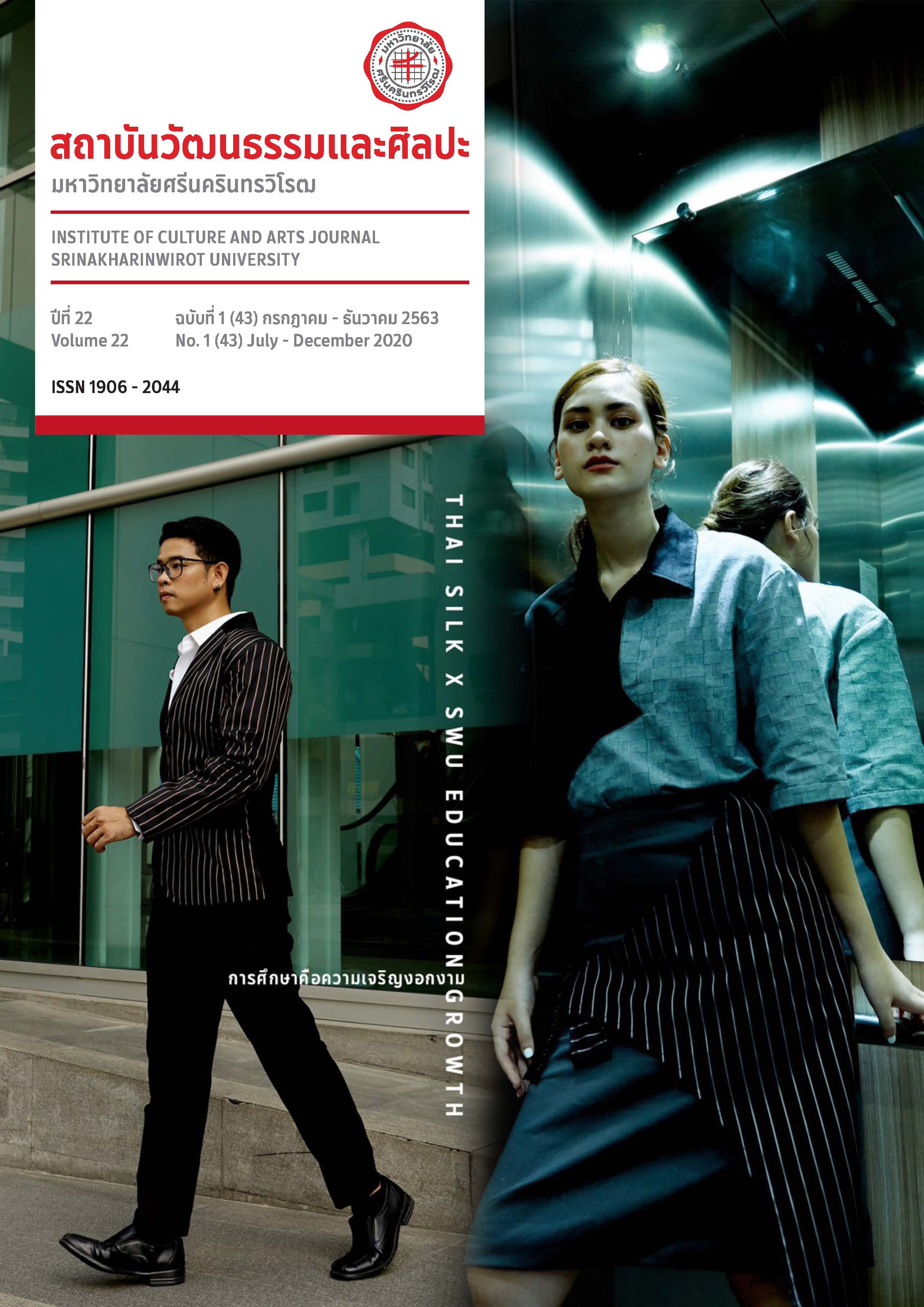วัฒนธรรมและวิถีชีวิตในอาหารริมทางไทยและเวียดนาม
คำสำคัญ:
อาหารริมทาง, วิถีชีวิต, ไทย, เวียดนามบทคัดย่อ
ประเทศไทยและประเทศเวียดนามมีชื่อเสียงเรื่องอาหารริมทาง อาหารริมทางของทั้งสองประเทศมีความหลากหลายและมีลักษณะเฉพาะตัว เป็นที่นิยมของคนในประเทศและต่างประเทศ ปัจจุบัน อาหารริมทางมีบทบาทสำคัญยิ่งต่อการดำเนินชีวิต เป็นแหล่งเรียนรู้ที่น่าสนใจเกี่ยวกับวัฒนธรรมการกินและวิถีชีวิต บทความวิจัยนี้มีวัตถุประสงค์เพื่อเปรียบเทียบลักษณะของอาหารริมทางไทยและอาหารริมทางเวียดนามที่มีลักษณะคล้ายคลึงกัน และให้ความรู้ความเข้าใจเรื่องวัฒนธรรมและวิถีชีวิตของคนไทยและคนเวียดนามที่เกี่ยวข้องกับอาหารริมทาง ผลการวิจัยพบว่า อาหารริมทางมีบทบาทสำคัญมากสำหรับประเทศไทยและเวียดนาม เพราะช่วยตอบสนองเรื่องอาหารการกินของคนในเมืองใหญ่ที่มีจำนวนประชากรหนาแน่นอย่างสะดวกและรวดเร็ว ราคาไม่แพง อาหารริมทางไทยที่ได้รับรางวัลมิชลินไกด์บางประเภทมีลักษณะคล้ายกับอาหารริมทางของเวียดนาม เช่น ผัดไทย - เฝอส่าว (phở xào) บะหมี่ลูกชิ้นปลา - บะหมี่ลูกชิ้นปลาผงกะหรี่ (mì cá viên cà ri) สุกี้ - เหลา (Lẩu) ข้าวขาหมู - เกิมถิดคอเต่า (cơm thịt kho tàu) และข้าวมันไก่ – เกิมก่าตามกี่ (cơm gà Tam Kỳ) อาหารริมทางของทั้งสองประเทศสะท้อนวัฒนธรรมการกินและวิถีชีวิตของสองสังคมที่มีทั้งความเหมือนและความแตกต่างกัน
Downloads
เอกสารอ้างอิง
การท่องเที่ยวแห่งประเทศไทย. (2556). ทรัพยากรการท่องเที่ยวไทย ชุดภาคกลางและภาคตะวันออกกรุงเทพมหานคร. กรุงเทพฯ: การท่องเที่ยวแห่งประเทศไทย.
การท่องเที่ยวแห่งประเทศไทย. (2561). มิชลิน ไกด์ กรุงเทพมหานคร ภูเก็ต และพังงา (ฉบับ ปี 2562). กรุงเทพฯ: อมรินทร์ บุ๊คเซ็นเตอร์.
ไทยพีบีเอส. (2560, 17 มีนาคม). “ซีเอ็นเอ็น” ยกกรุงเทพฯ สวรรค์เเห่งอาหารริมทางดีที่สุดในโลกปีที่ 2 ติดต่อกัน. สืบค้นเมื่อ 25 สิงหาคม 2562, จาก https://news.thaipbs.or.th/content/260922.
ไทยรัฐ. (2560, 4 มิถุนายน). หนุนเยาวราช ย่าน "อาหารริมทาง" โลก สุข สนุก อร่อย. สืบค้นเมื่อ 12 มิถุนายน 2563, จาก https://www.thairath.co.th/news/business/961682
พิชญา แสงธูป และเจริญชัย เอกมาไพศาล. (2561, เมษายน - มิถุนายน). การศึกษาปัจจัยผลักดันและปัจจัยดึงดูดที่มีอิทธิพลต่อการ
บริโภคอาหารริมทางของผู้บริโภคชาวไทย: กรณีศึกษาร้านอาหารริมทางย่านถนนเยาวราช กรุงเทพมหานคร. ใน วารสารจุฬาลงกรณ์ธุรกิจปริทัศน์. 40(156): 103 – 145.
ราชบัณฑิตยสถาน. (2556). พจนานุกรมฉบับราชบัณฑิตยสถาน พ.ศ. 2554. พิมพ์ครั้งที่ 2. กรุงเทพฯ: ราชบัณฑิตยสถาน.
เวทิน ชาติกุล และ ภาคิน ลิขิตธนกุล. (2558). Thailand only เรื่องแบบนี้ มีแต่ไทย ๆ. กรุงเทพฯ: อมรินทร์.
สถาบันอาหาร กระทรวงอุตสาหกรรม. (2560). อาหารริมทาง (Street Food) ในประเทศไทย. สืบค้นเมื่อ 3 กันยายน 2562, จาก http://fic.nfi.or.th/MarketOverviewDomesticDetail.php?id=145.
แสงอรุณ กนกพงศ์ชัย; และคณะ. (2544). อาหาร: ทรัพย์และศิลป์แผ่นดินไทย. กรุงเทพฯ: แปลน โมทีฟ.
อดุลย์ รัตนมั่นเกษม. (2551). กินข้าวกับอาม่า วัฒนธรรมอาหารการกินของลูกจีนในเมืองไทย. กรุงเทพฯ: แสงแดด.
อัมพร จันทวิบูลย์. (2560, ตุลาคม-ธันวาคม). การพัฒนาอาหารริมบาทวิถีเพื่อยกระดับคุณภาพชีวิต ส่งเสริมเศรฐกิจและการท่องเที่ยว ไทย. ใน วารสารส่งเสริมสุขภาพและอนามัยสิ่งแวดล้อม. 40(4): 11.
IN-TOUCH Research & Consultancy - การท่องเที่ยวแห่งประเทศไทย. (2562). รายงานสรุปฉบับสมบูรณ์โครงการสำรวจข้อมูล เพื่อการวิเคราะห์พฤติกรรมนักท่องเที่ยวเชิงลึกปี 2562. กรุงเทพฯ: การท่องเที่ยวแห่งประเทศไทย.
Anna Papadopoulos. (2019, 30 September). Ranked: The World’s 50 Best Cities for Street Food-Obsessed Travellers, 2019. Retrieved September 15, 2019, from https://ceoworld.biz/2019/09/30/ranked-the-worlds-50-best-cities-for-street-food-obsessed-travellers-2019/.
Aybuke Ceyhun Sezgin and Nevin Sanlier. (2016). Street food consumption in terms of the food safety and health. Journal of Human Sciences. 13(3): 4072 – 4083.
Báo Vnexpress. (2019, 18 tháng 6). Chợ Lớn điểm đến lưu giữ ký ức người Sài Gòn. Tra cứu ngày 13 tháng 6năm2020, từ https://vnexpress.net/cho-lon-diem-den-luu-giu-ky-uc-nguoi-sai-gon-3939828.html Bộ Văn hóa Thể thao và Du lịch, Tổng cục Du lịch. (2018, 27 tháng 2). Nét hấp dẫn của ẩm thực đường phố. Tracứu ngày 5 tháng 9 năm 2019, từ http://www.vtr.org.vn/net-hap-dan-cua-am-thuc-duong-pho.html
Dương Quế Nhu, Nguyễn Tri Nam Khang và Nguyễn Thị Thảo Ly. (2014). Nét độc đáo của ẩm thực Việt Nam quađánh giá của du khách quốc tế. Tạp chí Khoa học trường Đại học Cần Thơ Phần D: Khoa học chính trị, kinh tế và pháp luật. 30 (2014): 51-59.
Food and Agriculture Organization of the United Nations. (2019). Street Foods. Retrieved August 15, 2019, fromhttp://www.fao.org/fcit/food-processing/street-foods/en/.
Netflix. (2019). Series Street Food, volume 1: Asia. [Video]. America: Netflix.
Nguyễn Thị Bẩy và Trần Quốc Vượng. (2010). Văn hóa ẩm thực Việt Nam nhìn từ lý luận và thực tiễn. Hà Nội:NXB Từ điển Bách Khoa và viện Văn Hóa.
Tom Vandenberghe and Luk Thys. (2011). Hanoi street food: cooking & travelling in Vietnam. Singapore: Page One.
Tracey Lister and Andreas Pohl. (2011). Vietnamese street food. Victoria: Hardie Grant Books.
Trần Ngọc Thêm. (1996). Cơ sở văn hóa Việt Nam. TP. HCM: Đại học Tổng hợp TP. HCM.
Viện nghiên cứu quản trị kinh doanh UCI. (2016). Một số khái niệm dùng trong ngành Thực phẩm. Tra cứu ngày 11 tháng 7 năm 2019, từ https://uci.vn/mot-so-khai-niem-dung-trong-nganh-thuc-pham-b218.php.
Vũ Ngọc Khánh và Hoàng Khôi. (2012). Ăn và uống của người Việt. Hà Nội: NXB Hà Nội.
ดาวน์โหลด
เผยแพร่แล้ว
รูปแบบการอ้างอิง
ฉบับ
ประเภทบทความ
สัญญาอนุญาต
บทความทุกบทความที่ได้รับการตีพิมพ์ถือเป็นลิขสิทธิ์ของวารสารสถาบันวัฒนธรรมและศิลปะ มหาวิทยาลัยศรีนครินทรวิโรฒ



